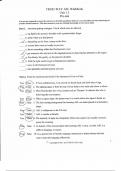Samenvatting
Samenvatting voor Financial Accounting 1 for Business UvA
- Instelling
- Universiteit Van Amsterdam (UvA)
Samenvatting van het vak Business Operations and Processes (BOP) van de UvA. Deze samenvatting heeft mijzelf een 9 opgeleverd, dus ik hoop dat het jou ook kan helpen.
[Meer zien]














